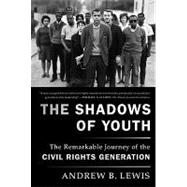
Note: Supplemental materials are not guaranteed with Rental or Used book purchases.
Purchase Benefits
Looking to rent a book? Rent The Shadows of Youth The Remarkable Journey of the Civil Rights Generation [ISBN: 9780374532406] for the semester, quarter, and short term or search our site for other textbooks by Lewis, Andrew B.. Renting a textbook can save you up to 90% from the cost of buying.
| Prologue: Freedom High | p. 3 |
| Qualities of Youth | |
| Sure Bugs Me: The Civil Rights Generation and the Failures of the 1950s | p. 17 |
| Generation Gaps: The Civil Rights Generation and the Promise of the 1950s | p. 38 |
| The Sit-in Craze: How the Movement Got its Groove Back | p. 63 |
| More than a Hamburger: From Student Protesters to Civil Rights Activists | p. 83 |
| Highway 61 Revisited: Inroads in the Deep South | p. 112 |
| The Dreams that Break Your Heart: Freedom Summer | p. 144 |
| Shadows of Youth | |
| Unravelings: A Generation Comes Apart | p. 179 |
| Angry Young Men in the Season of Radical Chic: The Black Power Moment | p. 207 |
| Exiles: The Ennui of Victory | p. 234 |
| The Power Brokers: Sncc Alumni and the Making of Black Political Power | p. 255 |
| Idols: The Civil Rights Generation in Power | p. 285 |
| Notes | p. 307 |
| Bibliography | p. 329 |
| Acknowledgments | p. 337 |
| Index | p. 341 |
| Table of Contents provided by Ingram. All Rights Reserved. |
The New copy of this book will include any supplemental materials advertised. Please check the title of the book to determine if it should include any access cards, study guides, lab manuals, CDs, etc.
The Used, Rental and eBook copies of this book are not guaranteed to include any supplemental materials. Typically, only the book itself is included. This is true even if the title states it includes any access cards, study guides, lab manuals, CDs, etc.